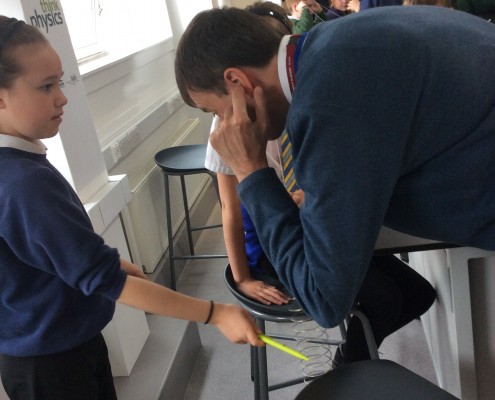This morning Think Physics hosted year 7 students from Kenton School and year 6 students from a number of primary schools.
During the morning, we thought about what j0bs can be done if you study science by looking at photos of different people. There were some very surprising people, including a snowboarding mechanical engineer. You can see the pictures here.
We also tried to work out what were in some ‘mystery boxes’. There was a lot of shaking and listening going on. This activity reminds us that science doesn’t know all the answers. We talked about how science is all about:
- suggesting ideas and testing them
- discussing and explaining
- being creative
- working with others
Next came sound. The year 7 pupils explained to their year 6 partners how sound travels through the air, and they modeled what a sound wave looks like.
We heard how sound travels differently through the air and through solids using a coathanger and a slinky spring. Do ask for a demonstration!
Finally we made loud lollies and sorry if that’s already drive you up the wall. We used them to discuss how you would plan an investigation, and how to control all the factors that might affect our results.










